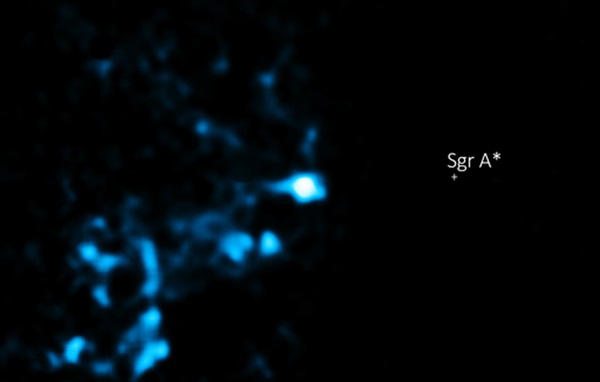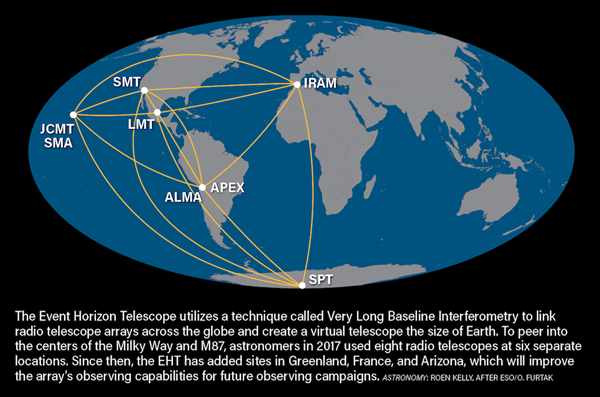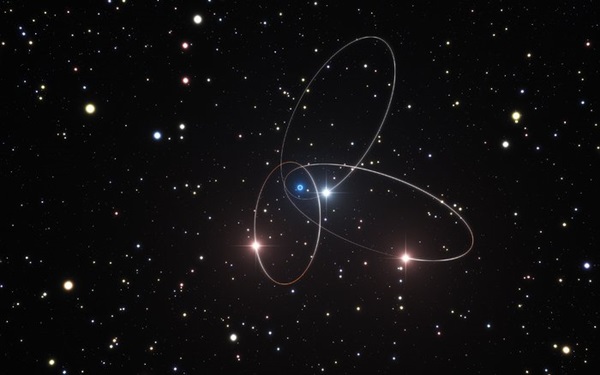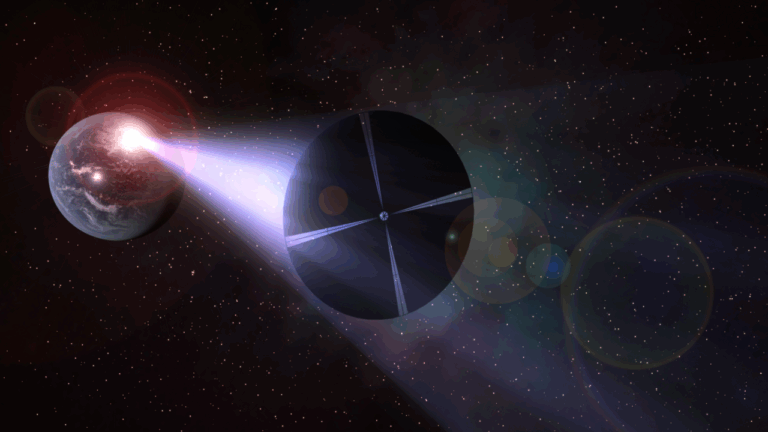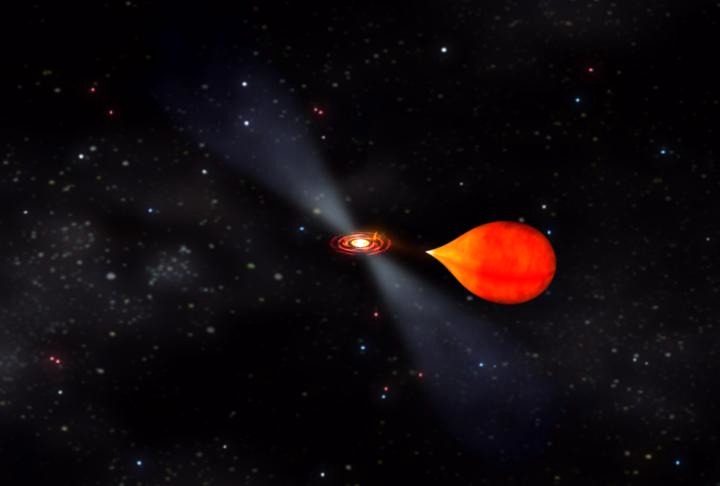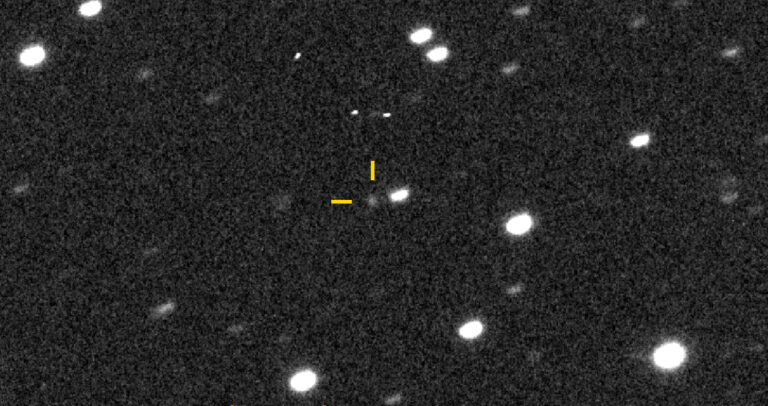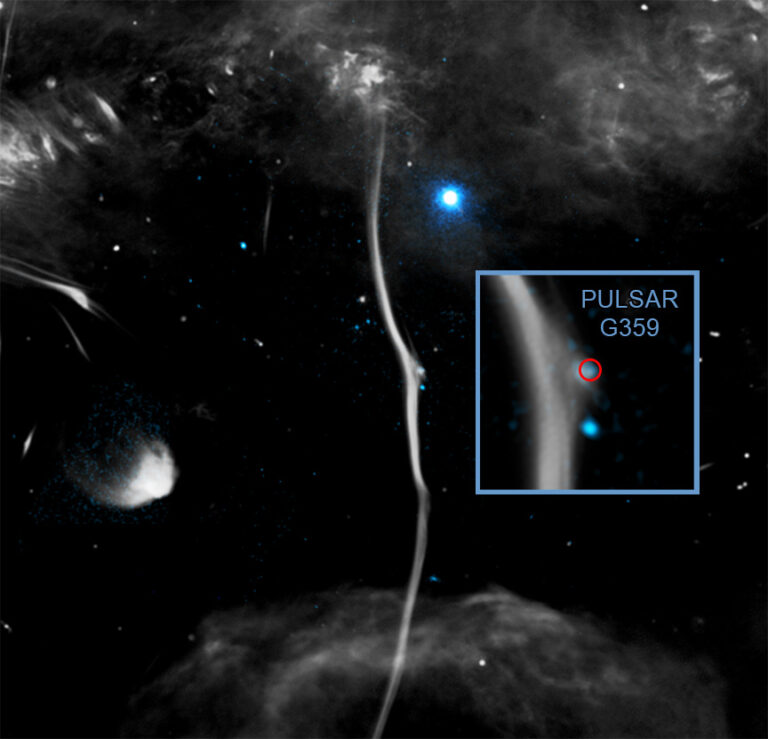Key Takeaways:
- Early detection of Sagittarius A* (Sgr A*) relied on radio astronomy due to the obscuring dust in the galactic center, initially identified as a bright radio source in the Sagittarius constellation.
- Radio interferometry, particularly Very Long Baseline Interferometry (VLBI), improved resolution, revealing Sgr A* as an exceptionally bright, small object, consistent with a supermassive black hole.
- Observations of stars orbiting Sgr A* at high speeds provide crucial tests of Einstein's general theory of relativity in extreme gravitational environments.
- The Event Horizon Telescope (EHT) recently released the first-ever image of Sgr A*, building upon decades of advancements in radio interferometry.
Before everyone knew about the giant black hole lurking in the center of our Milky Way galaxy, was just an exceptionally bright source of radio emission. But since the discovery of Sagittarius A* (pronounced “Sagittarius A-star”), the black hole has continued to surprise and delight us — while also serving as a testbed for our most fundamental understandings of gravity.
Calling all astronomers
Astronomers have known the rough location of the center of the Milky Way for nearly a century. They first learned this by monitoring the positions and velocities of globular clusters, finding that the clusters tended to orbit a common point. But try as they might to figure out if there’s anything interesting in our galactic core, their telescopes couldn’t spot much in that region of the sky.
The problem was dust. Lots of dust. The central core regions of the galaxy are so thick with dust that almost all forms of light go extinct before reaching the Earth, about 26,000 light-years away. To astronomers a century ago, the galactic center was a mystery.
But not all forms of light disappear behind the vast veil of interstellar gas and dust between us and the galactic center. Radio waves are known for their ability to sail through thick clouds of dust with relative ease. In 1933, the pioneering radio astronomer Karl Jansky (so pioneering that he has a unit named in his honor) used the newly minted idea of a radio telescope to identify a surprisingly bright source of radio emission coming from the direction of the Sagittarius constellation.
Right away, astronomers connected this bright radio source with the galactic center. And, in typical fashion for astronomy, they called the radio source Sagittarius A, because it was the first such source found in that constellation.
Into the dragon’s lair
The center of the Milky Way is really far away, and radio telescopes typically don’t have the greatest resolution. It wasn’t until the 1970’s and the invention of radio interferometry that astronomers gained a better picture of Sagittarius A.
Radio interferometry relies on using multiple detectors to try to capture the same image. Astronomers must carefully coordinate the separate data streams from all the telescopes to build a cohesive picture, a process that requires intensive computations. Interferometers do have their weaknesses — for example, the bare ground between the telescopes does not capture any usable data, so there is a lot of loss of information. But they also have one major strength.
In astronomy, the bigger the telescope the higher the resolution you can achieve. For an interferometer, the farther apart you set your individual telescopes, the smaller the object you can resolve.
With these interferometers, radio astronomers were able to identify an exceptionally bright, small spot buried in the heart of Sagittarius A. The astronomers were so surprised by this spot that they named it Sagittarius A* (or Sgr A*), applying the asterisk usually used to denote an excited state of an atom.
Equipped with clearer and more detailed observations, astronomers were able to start placing estimates on the size and mass of the object emitting the radio waves. They found that it was both smaller than our solar system and millions of times more massive than the Sun.
There’s only one kind of object in the universe that fits that description: a supermassive black hole.
Daredevils in the dark
The supermassive black hole at the center of the Milky Way doesn’t emit light itself. It is a black hole, after all. But all the gas and dust surrounding that monster is perfectly capable of emitting light. As it violently swirls and compresses on its way to the event horizon, the material can reach scorching hot temperatures, approaching 18 million degrees Fahrenheit (10 million Celsius). At those temperatures, the material, which quickly forms a thin, rapidly spinning accretion disk, emits intense amounts of radiation across the entire electromagnetic spectrum.
Most of that radiation gets absorbed by the gas and dust within the galactic core, with only X-rays and radio emissions making their way across the galaxy to our planet. (Since we developed radio telescopes before X-ray astronomy, we are more familiar with Sagittarius A* as a radio source rather than an X-ray source).
Further advances have allowed astronomers to achieve incredibly high-precision observations, tracking individual stars as they orbit Sagittarius A* at a up to a few percent the speed of light . Those observations are crucial, as the stars weave and dart in and out around the supermassive black hole in their orbits. By carefully watching them over years and even decades, astronomers can deduce the properties of gravity in this extreme environment, providing an instrumental test to Einstein’s general theory of relativity. These speedy stars also serve to clearly demonstrate that Sagittarius A* is indeed a black hole, as other arrangements like a dense clump of dead stars would result in different orbits.
Since the 1970’s, interferometry has evolved into VLBI, which stands for very long baseline interferometry. Essentially, VLBI is a souped-up interferometer with the distances between the individual telescopes stretching across the entire Earth. This has given astronomers unprecedented views of the center of our galaxy. Now, a shining example of VLBI is the Event Horizon Telescope, which in April 2019 released the first image ever taken of a black hole (M87)
And today (May 12), after years of cleaning up the data, EHT has released the first image ever taken of the Milky Way’s supermassive black hole, Sagittarius A*.

